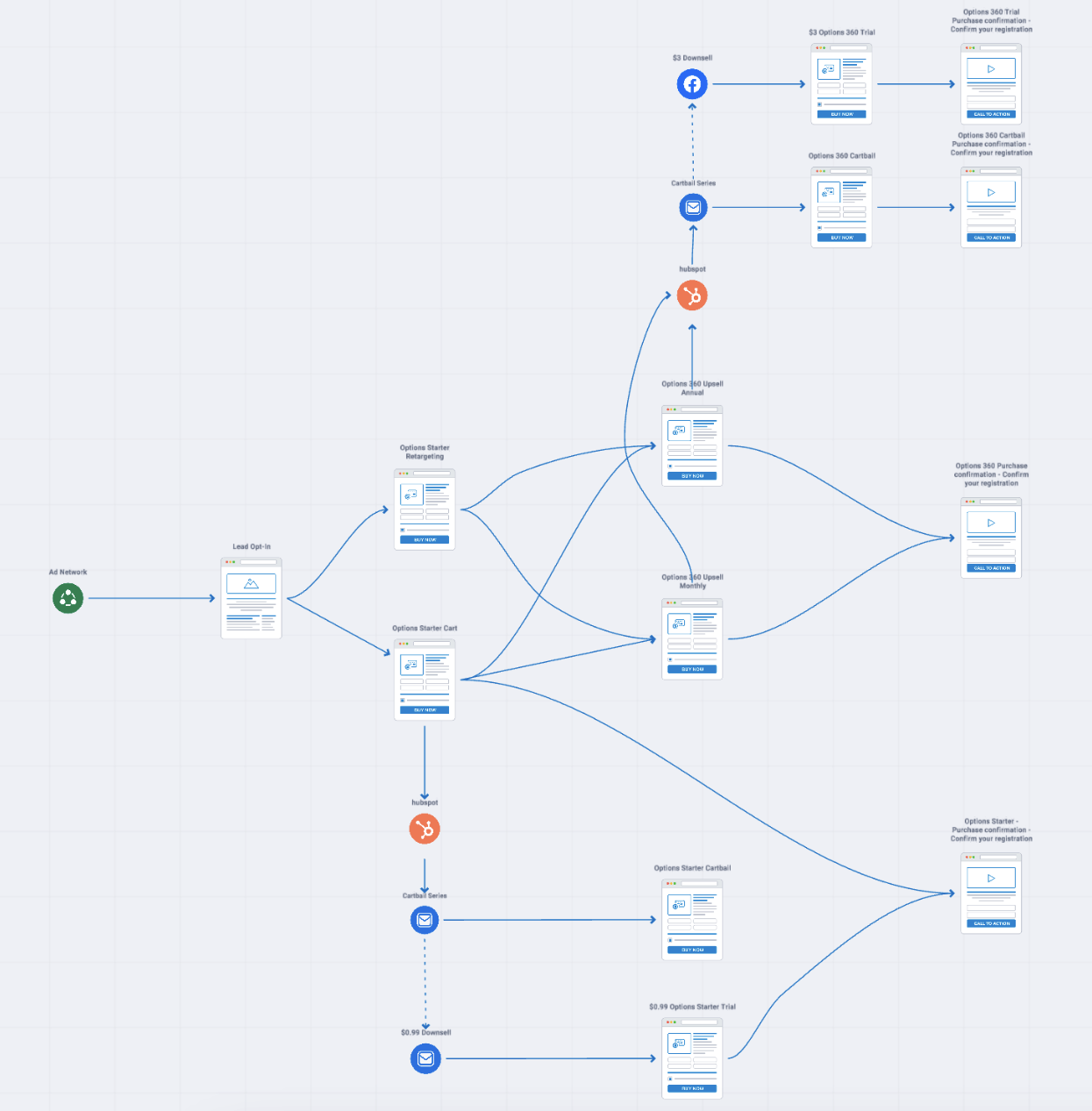In the world of digital marketing, retargeting has emerged as a game-changing strategy to reach potential customers who have previously shown interest in a product or service. By utilizing retargeting across paid channels, businesses can effectively reconnect with their target audience, ultimately increasing conversion rates and maximizing the return on investment. In this article, we will explore various retargeting strategies, discuss their importance, and delve into the key elements that contribute to successful retargeting campaigns.
Understanding the Basics of Retargeting
Before we dive into the specific strategies, let’s first establish what retargeting actually is. Retargeting, also known as remarketing, is a digital marketing technique that allows businesses to display targeted advertisements to users who have previously interacted with their website or mobile app. This interaction can range from visiting a specific page to adding items to a shopping cart without completing the purchase.
Retargeting involves placing a tracking pixel, a snippet of code, on your website or app. This pixel collects data on users’ behavior and helps identify those who are more likely to convert. With this information, businesses can then serve personalized ads to these potential customers as they browse other websites or engage with social media platforms.
But why is retargeting so important in the digital marketing landscape? Let’s explore its significance further.
Importance of Retargeting in Digital Marketing
Retargeting holds immense significance in the digital marketing landscape. According to research, only a small percentage of website visitors make a purchase or take the desired action during their initial visit. This means that businesses have a vast pool of potential customers who have shown interest but haven’t converted yet.
Retargeting allows businesses to maintain a connection with those visitors, increasing the chances of bringing them back to complete a transaction. By displaying personalized ads to these potential customers, businesses can remind them of the products or services they were interested in and provide incentives to make a purchase.
Additionally, retargeting helps build brand awareness and reinforces the message. As users repeatedly see targeted ads across different platforms, it helps to keep the brand at the forefront of their minds. This constant exposure can lead to increased brand recognition and trust, making it more likely for users to choose the advertised business when they are ready to make a purchase.
Furthermore, retargeting can also be used to upsell or cross-sell to existing customers. By analyzing their previous purchases or interactions, businesses can identify opportunities to showcase complementary products or services, increasing the average order value and customer lifetime value.
In conclusion, retargeting is a powerful tool in a marketer’s arsenal. It allows businesses to reconnect with potential customers, build brand awareness, and drive conversions. By leveraging the data collected through tracking pixels, businesses can deliver personalized ads that resonate with users, increasing the likelihood of conversion and maximizing their marketing efforts.
Different Types of Retargeting Strategies
Now that we understand the fundamentals of retargeting, let’s explore the various strategies businesses can employ to reconnect with their potential customers.
Pixel-Based Retargeting
Pixel-based retargeting is the most common technique used by advertisers. It involves placing a pixel on your website, which tracks user activity and enables you to serve tailored ads to those visitors on other websites or platforms. This method is particularly effective in reminding potential customers about items they have shown interest in or left abandoned in their shopping carts.
With pixel-based retargeting, businesses can gain valuable insights into customer behavior. The pixel tracks the pages a user visits, the products they view, and the actions they take on the website. This data can be used to create highly personalized ads that are more likely to resonate with the individual’s interests and preferences.
Furthermore, pixel-based retargeting allows businesses to reach potential customers across multiple platforms and websites. By leveraging the data collected from their own website, advertisers can display ads to users as they browse the internet, increasing the chances of re-engaging them and driving conversions.
List-Based Retargeting
List-based retargeting, also known as email retargeting, utilizes a customer’s email address to deliver targeted ads. By integrating your email list with your advertising platform, you can show personalized ads to individuals who have subscribed to your newsletters or provided their contact information. This strategy works well for nurturing leads and driving conversions among your existing subscribers.
One of the key advantages of list-based retargeting is the ability to create highly personalized and relevant ads. By segmenting your email list based on various criteria such as demographics, purchase history, or engagement level, you can tailor your ads to specific groups of subscribers. This level of personalization not only increases the chances of conversion but also enhances customer satisfaction and loyalty.
In addition to delivering targeted ads, list-based retargeting allows businesses to engage with their subscribers through email marketing campaigns. By sending regular updates, promotions, and exclusive offers, businesses can stay top-of-mind and nurture relationships with their customers. This ongoing communication helps to build trust and encourages repeat purchases.
Furthermore, list-based retargeting provides businesses with valuable data and insights. By analyzing the performance of different email campaigns, businesses can gain a deeper understanding of their customers’ preferences, behaviors, and buying patterns. This information can then be used to refine marketing strategies and improve overall campaign effectiveness.
Key Elements of Successful Retargeting
Retargeting campaigns require careful planning and consideration of various elements to achieve desired results. Let’s explore three key components that can significantly impact the success of your retargeting efforts.
Target Audience Segmentation
Segmentation plays a pivotal role in retargeting success. By dividing your website visitors into specific groups based on their behavior, interests, or demographics, you can create personalized ad campaigns that resonate with each segment. This targeted approach ensures that your ads are relevant and compelling to the respective audience, increasing the likelihood of conversions.
For example, if you run an online clothing store, you can segment your audience based on their browsing history. Those who have shown interest in men’s clothing can be targeted with ads featuring the latest trends in men’s fashion, while those who have shown interest in women’s clothing can be targeted with ads showcasing new arrivals in women’s fashion. By tailoring your ads to specific segments, you can deliver a more personalized and engaging experience to your potential customers.
Furthermore, you can also segment your audience based on their stage in the buyer’s journey. For instance, you can target visitors who have added items to their cart but haven’t completed the purchase with ads offering a discount or free shipping to incentivize them to complete their transaction. On the other hand, visitors who have already made a purchase can be targeted with ads promoting related products or offering loyalty rewards.
Ad Creativity and Design
In a saturated digital landscape, ad creativity and design play a crucial role in capturing users’ attention. Your retargeting ads should be visually appealing and align with your brand’s messaging. Experiment with different formats, such as image ads, video ads, or carousel ads, to keep your audience engaged and interested in your product or service.
When designing your retargeting ads, consider using eye-catching visuals that highlight the unique features or benefits of your product. Incorporate persuasive copy that speaks directly to the pain points or desires of your target audience. By creating compelling and visually appealing ads, you can increase the chances of grabbing your audience’s attention and driving them back to your website.
It’s also important to ensure that your ads are consistent with your overall brand identity. Use colors, fonts, and imagery that align with your brand’s style guide to maintain a cohesive and recognizable presence across all touchpoints. This consistency helps build trust and reinforces your brand’s message in the minds of your potential customers.
Landing Page Optimization
Once a potential customer clicks on your retargeting ad, it’s essential to provide them with a seamless and optimized landing page experience. Ensure that your landing page is relevant to the ad they clicked on and provides clear and compelling information. Optimize the page’s load time, include a strong call-to-action, and remove any potential distractions that may lead to bounce rates.
Consider using dynamic landing pages that automatically adapt to the visitor’s previous interactions with your website. For example, if a visitor clicked on an ad promoting a specific product, the landing page should display that product prominently and provide additional details, customer reviews, and a clear path to purchase. By tailoring the landing page to the visitor’s interests, you can enhance their experience and increase the likelihood of conversion.
Furthermore, ensure that your landing page is mobile-friendly. With the increasing use of smartphones and tablets, it’s crucial to provide a seamless browsing experience across all devices. Optimize the layout, font sizes, and images to ensure they are easily viewable and accessible on smaller screens. A mobile-friendly landing page can significantly improve user engagement and conversion rates.
In conclusion, successful retargeting campaigns require careful consideration of various elements. By segmenting your target audience, creating visually appealing ads, and optimizing your landing pages, you can maximize the effectiveness of your retargeting efforts and drive conversions. Remember to continuously monitor and analyze the performance of your campaigns to make data-driven optimizations and further improve your results.
Retargeting Across Various Paid Channels
Retargeting campaigns can effectively reach potential customers across multiple paid channels. Let’s explore the three most popular paid channels for retargeting.
Retargeting on Social Media Platforms
Social media platforms like Facebook and Instagram offer robust retargeting capabilities. By leveraging users’ data collected through tracking pixels or by integrating your customer lists, you can create custom audience groups for targeted advertisements. These platforms provide advanced targeting options, allowing you to reach potential customers based on their demographics, interests, and behaviors.
Retargeting on Search Engines
Retargeting on search engines, such as Google Ads, allows you to reconnect with potential customers who have previously interacted with your website but haven’t converted yet. By bidding on specific keywords and displaying your ads when users search for related terms, you can remind them of your brand and encourage them to return to your website to complete their desired action.
Retargeting on Display Networks
Display networks, like Google Display Network, consist of a vast network of websites and apps where you can display your retargeting ads. Leveraging the power of contextual targeting and audience segmentation, you can showcase your ads on relevant websites to capture the attention of potential customers as they browse the internet.
Measuring the Success of Your Retargeting Campaigns
Like any other marketing strategy, measuring the success of your retargeting campaigns is crucial to optimize performance and achieve desired outcomes. Let’s explore two key performance indicators and how to analyze and interpret retargeting data.
Key Performance Indicators for Retargeting
Conversion rate and click-through rate (CTR) are two important metrics to monitor during your retargeting campaigns. Conversion rate measures the percentage of visitors who complete the desired action after clicking on your retargeting ad. CTR, on the other hand, indicates the percentage of users who click on your ad after being exposed to it. By tracking these metrics, you can assess the effectiveness of your campaigns and make data-driven decisions.
Analyzing and Interpreting Retargeting Data
Retargeting platforms provide valuable data and insights that can help you further optimize your campaigns. Analyze the performance of different ad creatives, segment-based retargeting, and channels to identify patterns and trends. Adjust your strategies based on these insights to continually improve your retargeting efforts and achieve better results.
By adopting retargeting strategies and implementing them across various paid channels, businesses can effectively increase their brand visibility, engagement, and conversions among potential customers. Remember to continuously monitor and optimize your campaigns to ensure long-term success.



